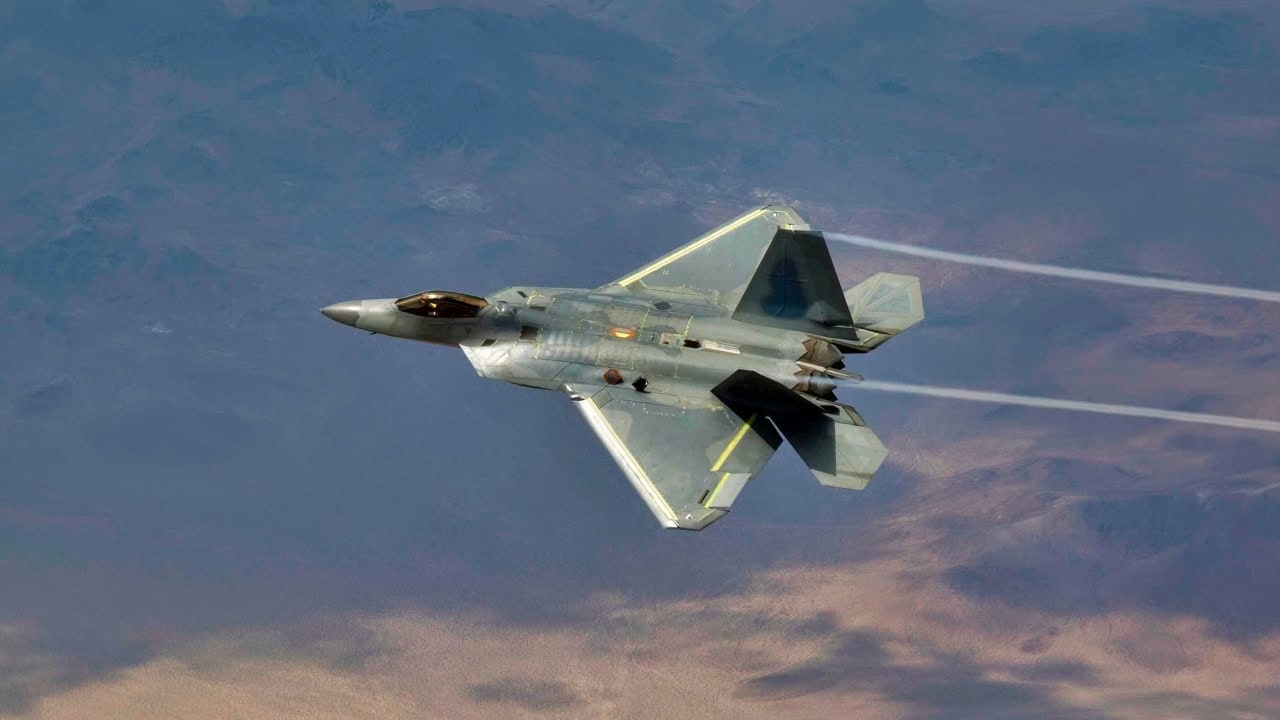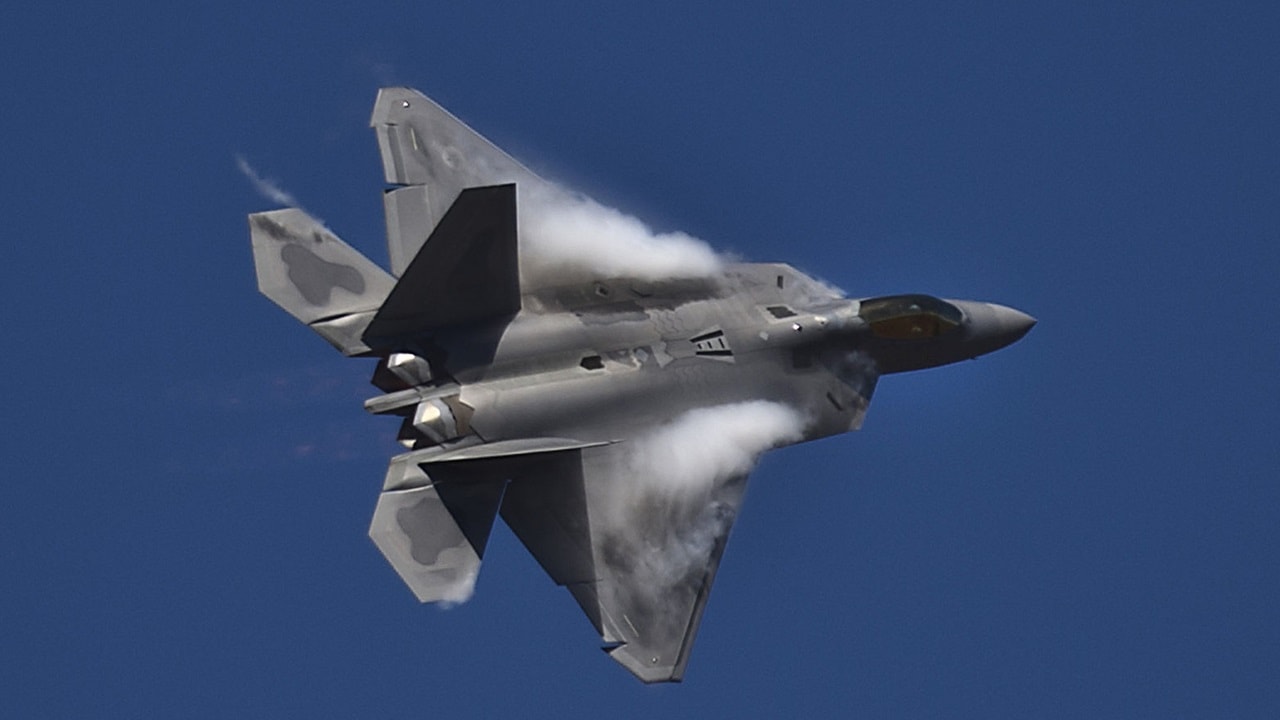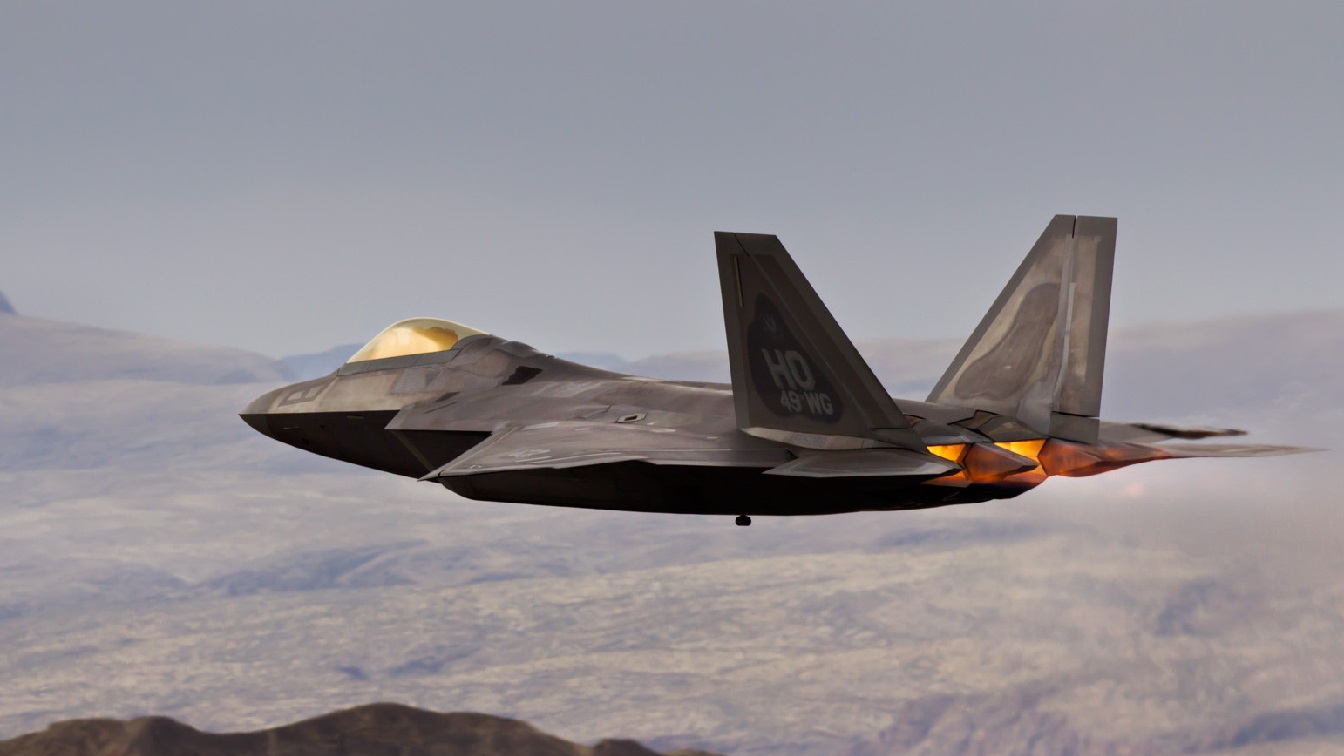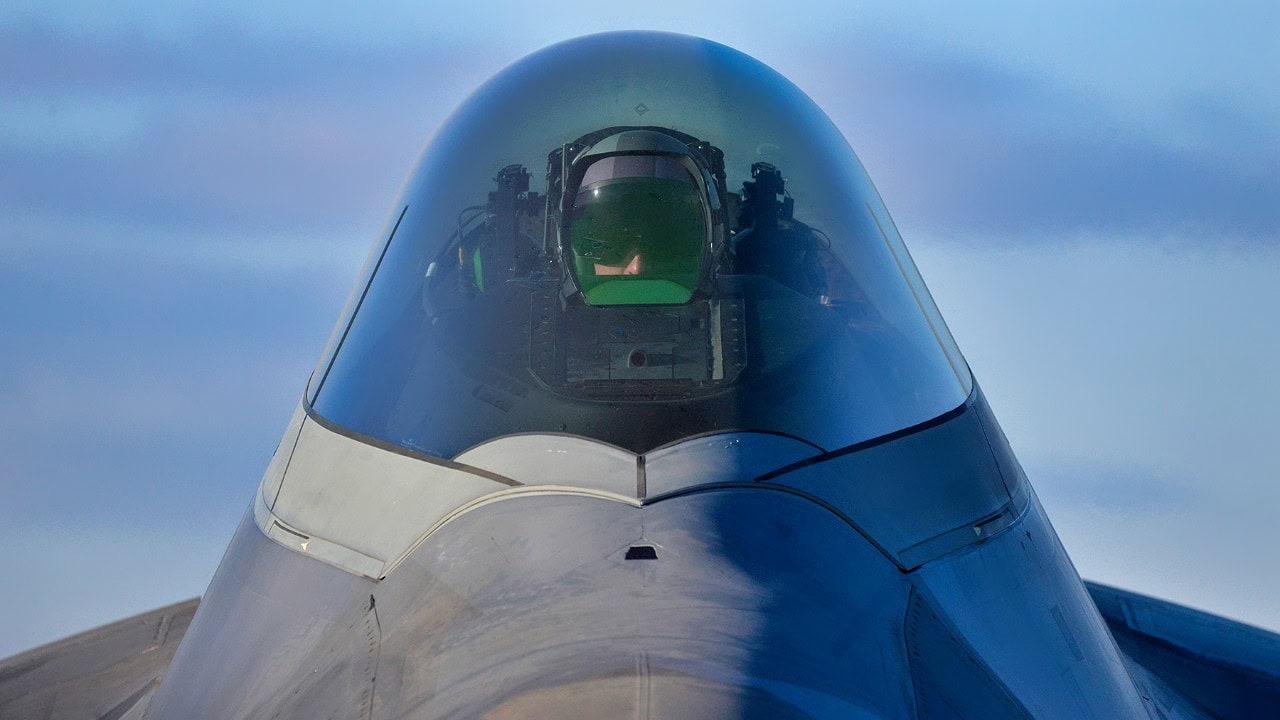A recent report examining American air power has reached a profoundly significant conclusion for American policymakers: the United States Air Force faces a shortage of trained pilots.
The paper, published by the Mitchell Institute for Aerospace Studies, a think tank, addressed the current state of combat power within America’s flying branch.

F-22 Raptor 4006 makes its second flight July 18 following an extensive refurbishment to get it back in the air. (Courtesy photo by Christopher Higgins/Lockheed Martin)
Among the most significant of the report’s staggering findings are the following:
“Since the Cold War ended, the Air Force along with its pilot inventory have been ominously reduced—so much so that today the Air Force is the oldest, the smallest, and the least ready in its entire history. Over the past 35 years, the Air Force was required to shutter over half its pilot training bases, divest over half its combat aircraft, and conduct aggressive reductions in its pilot strength. This downsizing had harmful consequences that defense leaders did not anticipate—the Air Force has struggled ever since to regain enough combat pilots. The bottom line is that the Air Force is too small to execute the national defense strategy.”
But how small is too small? The numbers are grim. The United States Air Force is short of pilots, woefully short — thousands short.
The paper’s forward also explains that the US Air Force is “now short by roughly 2,000 pilots. Over 1,000 of those are fighter pilots. Without correction, this shortfall will have devastating consequences. If the Air Force cannot resolve its fighter pilot shortfall in peacetime, it will not be able to replace combat pilots lost in a major war.”
The forward adds, ” Without an experienced pilot force with the strategic depth to sustain combat operations, our nation risks losing in a peer conflict. “
“The service no longer has the pilot training capacity to produce the new pilots the nation needs, nor does it have enough fighter aircraft to absorb them even if they were available. Compounding both these challenges is the continuing decline in the Air Force’s aircraft inventory—with no plan to halt that decline—as well as the problem of experienced pilots leaving the active duty Air Force at unsustainable rates.”
One of the central issues that the Mitchell Institute points to for losing pilots is not achieving pilot recruitment numbers and, secondly, losing active-duty pilots to the reserves. They point to the more flexible nature of being in the reserves as an attraction to that force—and a reason why retaining active pilots is so tricky.
The Pilot Shortage: What is to Be Done?
One of the central pillars of the Mitchell Institute’s report is that the United States should increase the size of the Air Force Reserve and swell the ranks of active duty pilots. It paints a grim picture—and urges observation of the wartime situation of Imperial Japan and Nazi Germany during the Second World War.
During that conflict, both of the two major Axis powers suffered incredible losses of men and materiel. By the end of the conflict, sourcing the raw materials to keep their respective war machines up and running was extremely difficult. Steel, aluminum, copper, fossil fuels, and other petroleum products were increasingly difficult to source. However, for Japan and Germany, pilots were the most challenging resource to find near the war’s end.

A U.S. Air Force F-22 Raptor from 94th Fighter Squadron Langley Air Force Base, Va., takes off to perform an aerial demonstration for an estimated 180,000 spectators at the Australian International Airshow, March 2, 2013 at Avalon Airport in Geelong, Australia. The F-22 demo team are currently deployed to the 18th Fighter Wing, Kadena Air Base, Japan to support pacific theater operations. This is the first official demonstration of the F-22 Raptors capabilities at an airshow outside the United States. The Australian International Airshow 2013 (AIA13), is held biennially, and is one of the largest international trade shows in the Pacific. The Airshow is expected to draw 350,000 visitors and has featured 500 defense exhibitors from 35 countries and is designed to bolster business opportunities in the international aviation sector. U.S. Pacific Command (USPACOM) participation in AIA13 directly supports theater engagement goals and objectives and further enhances relationships with other Pacific nations. (Department of Defense photo by U.S. Air Force Tech. Sgt. Michael R. Holzworth/Released)
Pilot training is incredibly stringent and selective. Just look to the Top Gun franchise—though a product of the Hollywood entertainment industry, it paints a picture rich with artistic license but, in essence, true: pilot selection is complex, pilot training is tough, and aerial combat is punishing. Replacing pilots takes months—arguably years—for well-trained aspirants to make the grade. However, having strategic depth within pilot reserves is utterly essential.
It matters not how stealthy, exquisite, or advanced one’s fighter jet is. Without adequate pilot training and the resources to train them, planes sit useless on the tarmac.
Into the Future
There is an argument to be made that the age of piloted aircraft is reaching its sunset. When President Donald Trump and Secretary of Defense Hegseth announced the winner of the Next-Generation Air Dominance project, the initiative that ultimately yielded the US Air Force’s sixth-generation aircraft, the media fixated on the fact that that aircraft, the F-47, would be the last manned fighter in the United States.

F-22 Raptor. Image Credit: Creative Commons.
And that well may be the case. For the time being, however, the United States Air Force still relies entirely on a fleet of manned fighter jets, bombers, aerial refueling aircraft, cargo transports, reconnaissance and surveillance aircraft, and others.
Without a deep reserve of trained pilots, a large liability looms glaringly on the US Air Force’s horizon.
About the Author: Caleb Larson
Caleb Larson is an American multiformat journalist based in Berlin, Germany. His work covers the intersection of conflict and society, focusing on American foreign policy and European security. He has reported from Germany, Russia, and the United States. Most recently, he covered the war in Ukraine, reporting extensively on the war’s shifting battle lines from Donbas and writing on the war’s civilian and humanitarian toll. Previously, he worked as a Defense Reporter for POLITICO Europe. You can follow his latest work on X.

